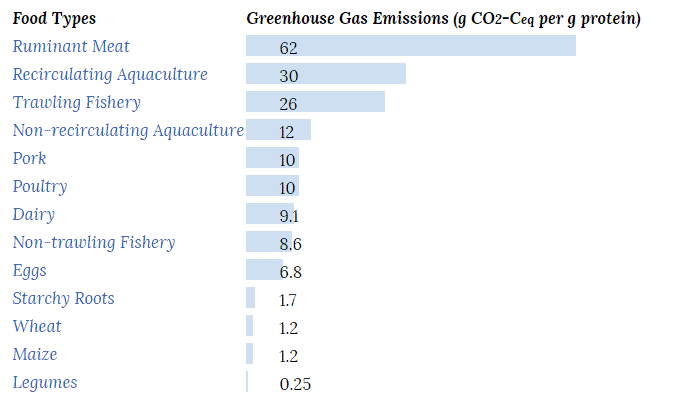With minor tweaks that would promote equally nutritious and sustainable foods, national dietary requirements could make an important impact.

The global food system is broken. It’s not healthy for the 815 million chronically undernourished people, it’s not healthy for the 1.9 million overweight and obese adults, and it’s not healthy for the planet. Almost a quarter of our total greenhouse gas emissions comes from agriculture, and that’s not all of it — agriculture is also a major contributor to deforestation and is directly responsible for the decline of numerous species.
Often times, however, foods that aren’t healthy for us are also not healthy for the environment. Red meat is a good example of this: it uses a lot of resources and produces a large amount of greenhouse gases, while not being a truly healthy dietary option.
Most national dietary guidelines advise against heavy consumption of red meat due to health concerns, but they seldom take into consideration sustainability. Nevertheless, healthy eating and sustainability often go hand in hand, the authors of a new study explain.
“The link between the environment and food consumption has been made in several studies. Tilman and Clark found that alternative diets (Mediterranean, pescatarian, and vegetarian), characterized by lower meat consumption and higher consumption of vegetables and fruits, offer both health and environmental benefits. Tukker et al. showed that healthier European diets with less meat reduce environmental impacts without significant rebound effects from changed food expenses. Reynolds et al.reviewed the environmental impacts of dietary recommendations by the World Health Organization (WHO), which promote healthy eating and also imply lower meat consumption along with higher consumption of vegetables and fruits. They confirmed that healthy diets have the potential to reduce environmental impacts.”
The researchers analyzed dietary guidelines in 37 countries. They found that even without sustainability as a factor, if people in these countries would switch to the recommended diets, it would have a beneficial environmental impact.

Most countries (27 out of 37) would reduce their animal product consumption if they were to switch from the current average diet to the nationally recommended diet. This would significantly reduce the environmental dietary impact.
However, there are a few notable exceptions — including Indonesia, India, Russia, and the United States. The current average diet in these countries includes animal product consumption below the average of the analyzed 37 countries. The United States’ high animal product consumption is dominated by milk in average diets.
For the US, and most analyzed countries, the dietary recommendations raise a trade-off between three aspects: nutritional value, environmental impact, and animal welfare. For instance, poultry has a lower environmental impact than beef, but it involves killing more animals — so the animal welfare impact is larger. However, in some instances, there can be win-win-win scenarios.
‘Several countries have demonstrated that it is possible to achieve beneficial synergies across all three dimensions,’ Scherer says. ‘Therefore, I hope that our results stimulate a revision of dietary guidelines that considers all three aspects and tries to exploit the opportunity we have for a win-win-win.’
This study emphasizes what previous research has already shown: reducing the consumption of meat is one of the most environmentally-friendly things you can do. In fact, there is some troubling research showing that if the world doesn’t reduce this consumption, we will have serious problems in curbing climate change. Earlier this year, a team of researchers put together the ‘planetary diet‘: a healthy, nutritious diet that can save the planet by reducing the environmental impact. A follow-up study found that the price for this diet is around $3 / day for Europe and the US.
The study was published in One Earth.


